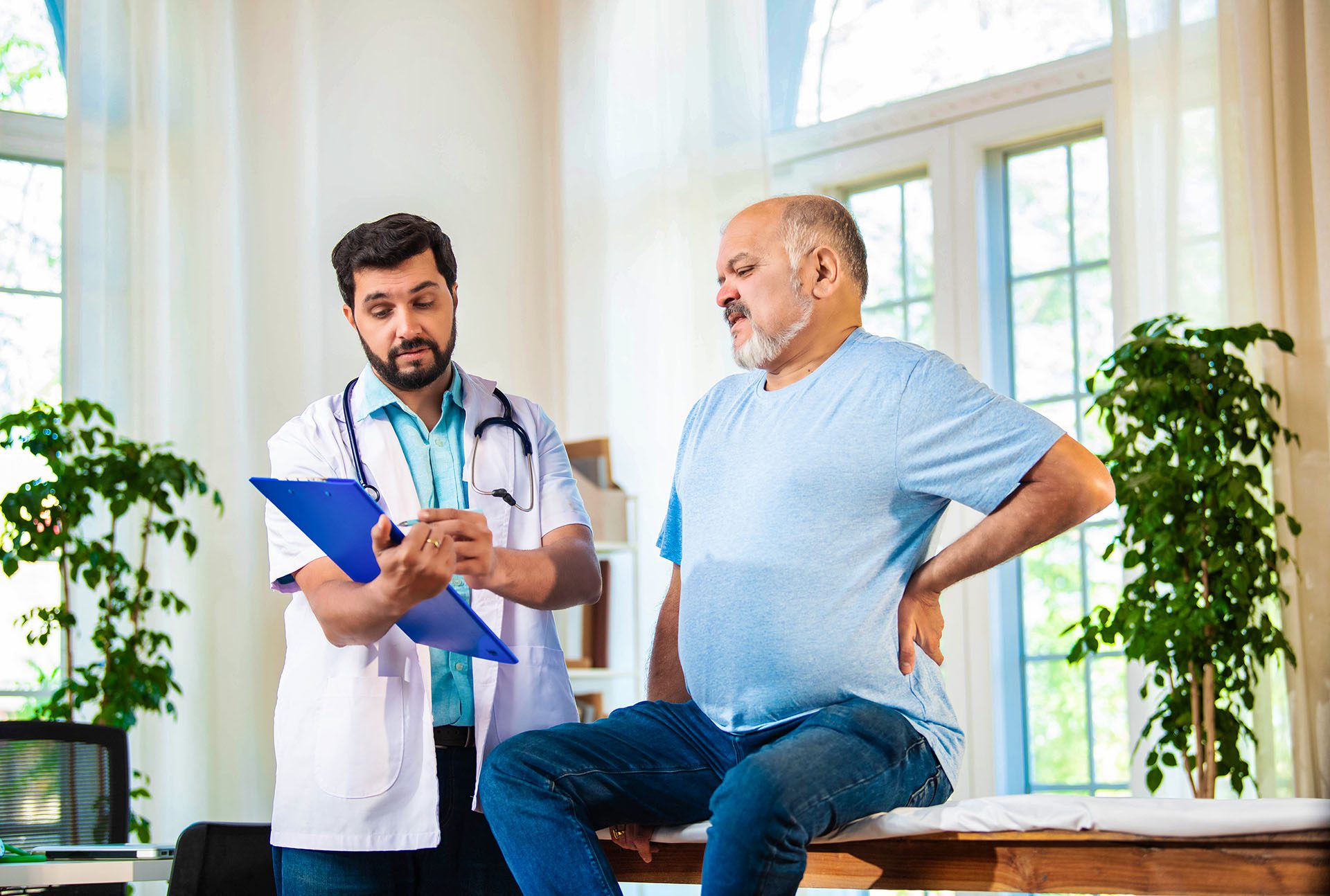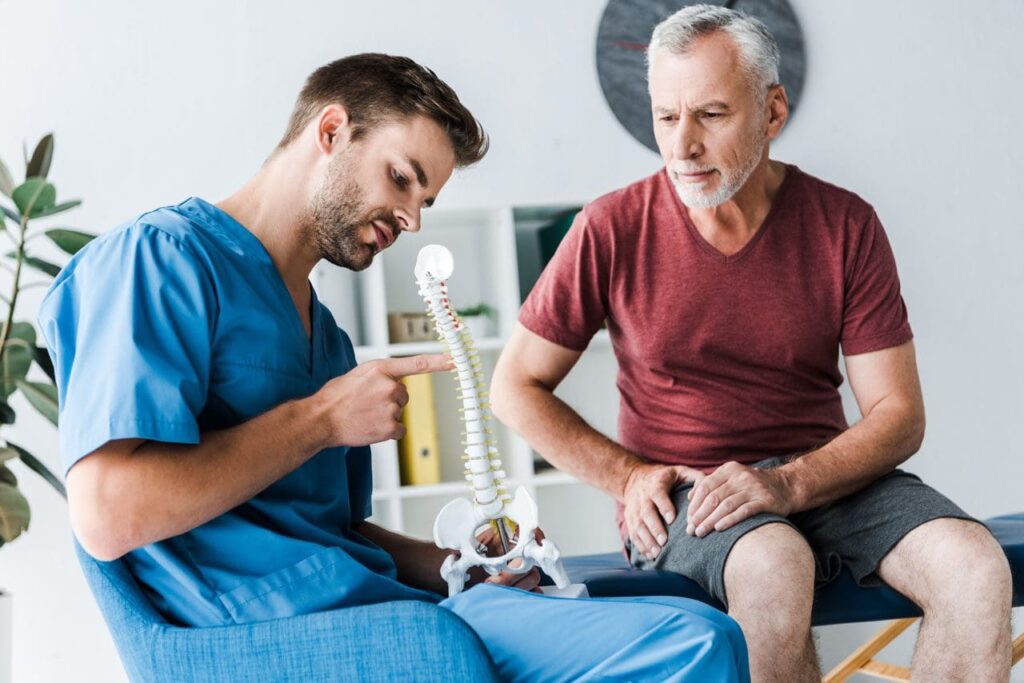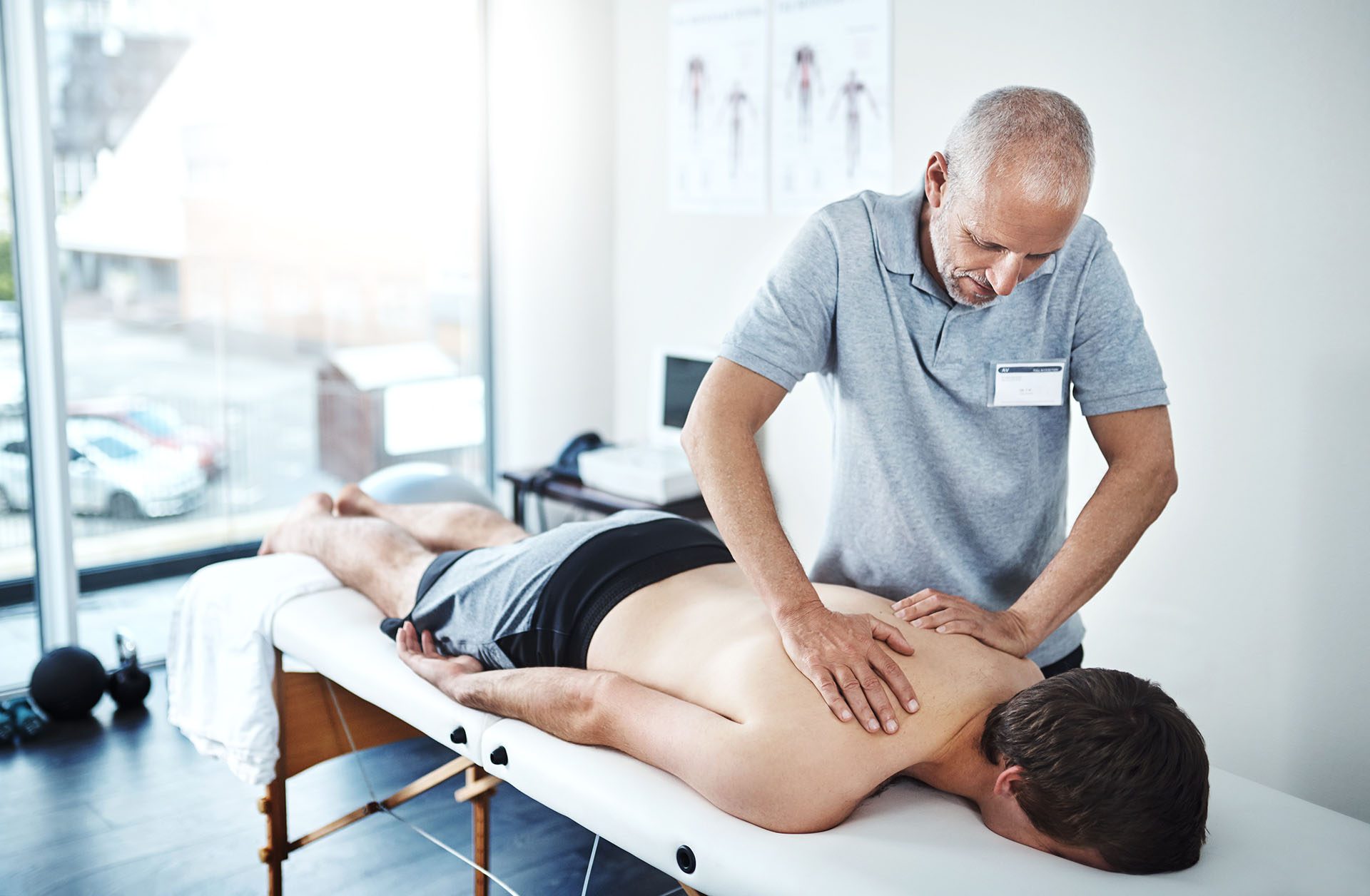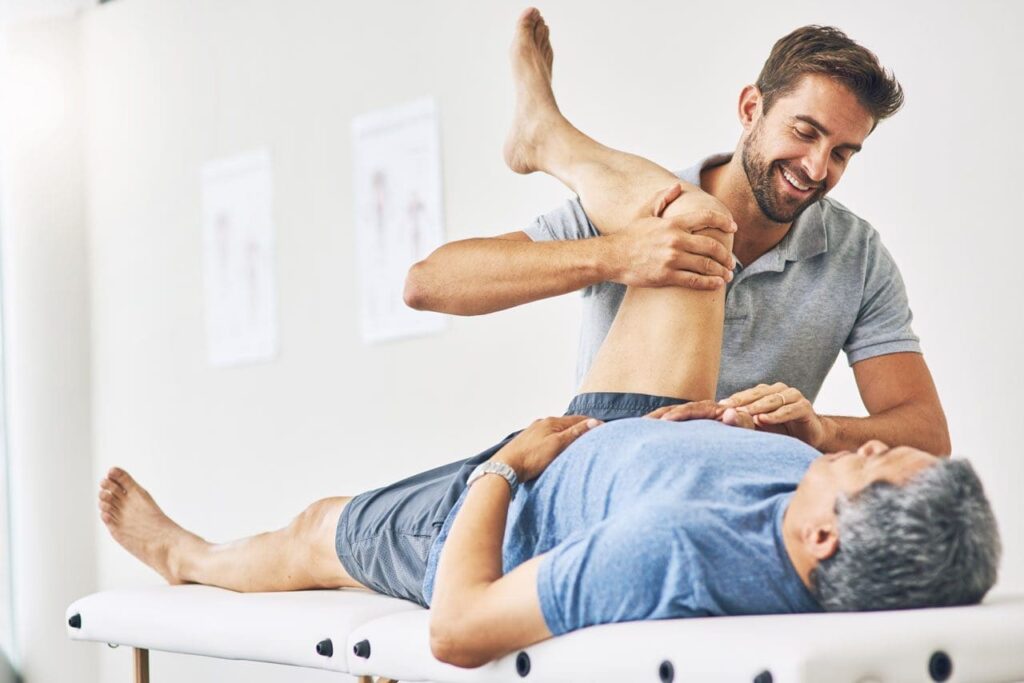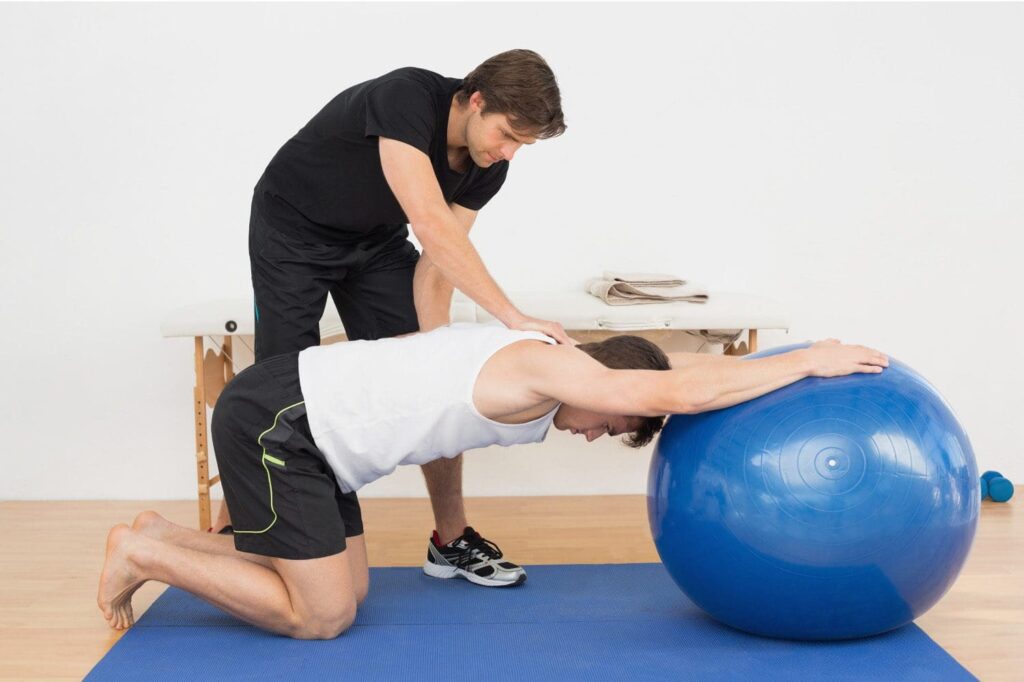ChiroMed’s Approach to Sciatic Nerve Wellness
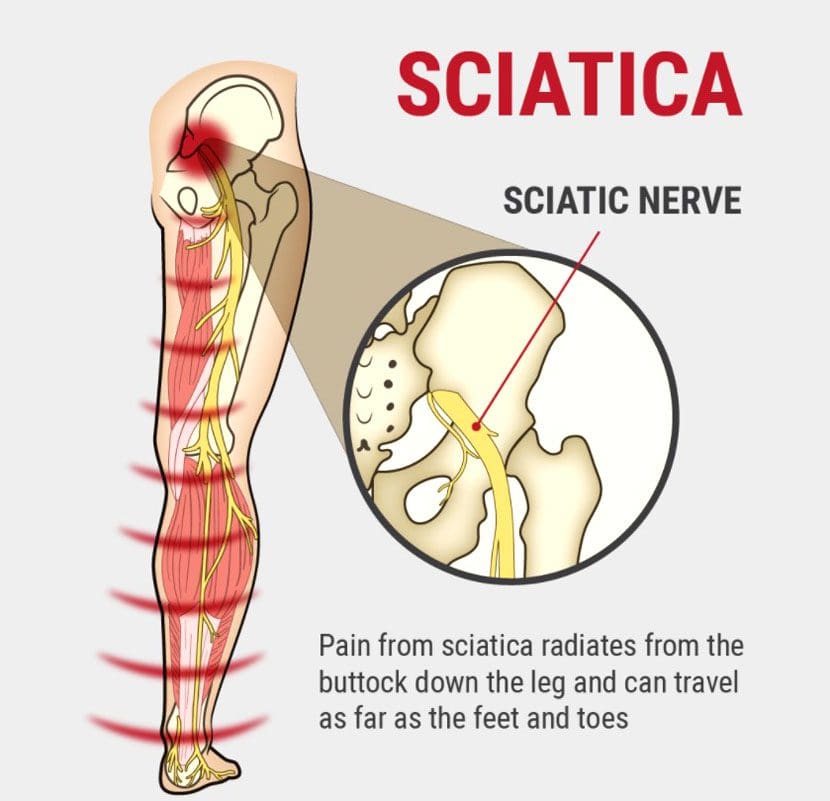
Sciatic Nerve Health at ChiroMed: Integrated Care for Holistic Healing
The sciatic nerve is a vital part of your body’s ability to move and feel. As the largest nerve in the human body, it stretches from your lower back down through your legs, helping you walk, stand, and sense touch or pain. When it becomes irritated or compressed, it can cause sciatica—a condition that brings sharp pain, numbness, or tingling down the leg. At ChiroMed—Integrated Medicine in El Paso, TX, we specialize in helping patients manage sciatic nerve issues through holistic, patient-centered care.
In this article, we’ll explore the sciatic nerve’s structure, which is made up of bundles of nerve fibers called axons wrapped in protective connective tissue. We’ll also explain how ChiroMed’s chiropractic techniques relieve pressure on the nerve and how our integrated care—combining massage, physical therapy, and nutrition—promotes lasting healing. Drawing on the expertise of Dr. Alexander Jimenez, DC, APRN, FNP-C, and our skilled team, we’ll show how ChiroMed treats injuries from work, sports, personal accidents, and motor vehicle crashes (MVAs) to restore health naturally.
Whether you’re dealing with sciatica or aiming to prevent nerve problems, ChiroMed’s approach can help you feel better and live well.
The Sciatic Nerve: A Key Player in Movement
The sciatic nerve begins in the lower spine, where nerve roots from L4 to S3 come together. It travels through the buttocks and down each leg, splitting into smaller nerves that control muscles and carry sensations from the thighs, calves, and feet. When compressed by a herniated disc, tight muscles, or injury, it can trigger sciatica, causing pain that disrupts daily life.
At ChiroMed, we understand how important a healthy sciatic nerve is for staying active. Our goal is to address the root causes of nerve irritation using natural, non-invasive methods that support your body’s healing process.
How the Sciatic Nerve Is Built
The sciatic nerve is like a cable that carries signals for movement and feeling. It’s made of neurons, or nerve cells, each with a long fiber called an axon. These axons are bundled into groups called fascicles, which are held together by layers of connective tissue.
- Endoneurium: This thin layer wraps each axon, protecting it and its myelin sheath, which speeds up nerve signals.
- Perineurium: This surrounds each fascicle, acting like a barrier to keep the bundle secure.
- Epineurium: The outermost layer encases the entire nerve, giving it strength and flexibility.
These layers make up nearly half the nerve’s structure, ensuring it can handle stress while staying pliable. If inflammation or injury affects these tissues, it can pinch the axons, causing pain or numbness. ChiroMed’s treatments focus on keeping these layers healthy to support nerve function.
What Causes Sciatic Nerve Problems?
Sciatica often results from pressure on the nerve. Common causes include:
- Herniated disks: When spinal disks bulge, they can press on nerve roots.
- Spinal stenosis: Narrowing of the spinal canal crowds the nerve.
- Piriformis syndrome occurs when the tight piriformis muscle in the buttocks pinches the nerve.
- Injuries: Work accidents, sports mishaps, falls, or MVAs can inflame the nerve.
At ChiroMed, we see these issues in patients with repetitive job strains, athletic overuse, or car crash injuries. Identifying the cause is the first step to effective care.
ChiroMed’s Chiropractic Care: Easing Nerve Pressure
Chiropractic care at ChiroMed is a cornerstone of sciatic nerve relief. Our chiropractors, led by Dr. Alexander Jimenez, use gentle adjustments to realign the spine and pelvis. This takes pressure off the sciatic nerve, reducing pain and improving mobility.
For example, a misaligned vertebra can press a disk against a nerve. A precise adjustment corrects this, creating space for the nerve to function. Dr. Jimenez uses advanced imaging, like X-rays or MRIs, to pinpoint the issue. For a warehouse worker with back pain from lifting, he might adjust the lumbar spine and recommend exercises to prevent re-injury.
Our clinic’s approach is backed by evidence showing chiropractic care outperforms medication for chronic pain (Ideal Spine, n.d.). Dr. Jimenez’s dual expertise as a chiropractor and nurse practitioner ensures thorough assessments, blending spinal exams with neurological tests for accurate diagnoses.
Integrated Care at ChiroMed: A Holistic Approach
At ChiroMed, we believe in treating the whole person. Our integrated care combines chiropractic with massage, physical therapy, acupuncture, and nutrition to support sciatic nerve health. This team effort, guided by our Practitioners Network, ensures coordinated, evidence-based care.
- Massage Therapy: Our licensed therapist, Helen Wilmore, uses deep tissue and trigger point massage to relax muscles like the piriformis, easing nerve compression. Patients feel less tingling and move better after sessions.
- Physical Therapy: Therapists Kristina Castle and Dr. Jimenez design exercises to strengthen the core and stretch tight hips. Techniques like the McKenzie method reduce leg pain by aligning the spine.
- Acupuncture: This calms inflammation and boosts natural painkillers like endorphins, complementing chiropractic adjustments.
- Nutrition Counseling: We guide patients on nerve-friendly foods. Vitamin B12 (found in fish and eggs) supports myelin repair, while alpha-lipoic acid (in spinach) reduces nerve inflammation (RxWellness, n.d.; Verywell Health, n.d.).
This integrative model, inspired by guidelines from the National Center for Complementary and Integrative Health (NCCIH, n.d.), promotes natural healing and prevents long-term issues.
Dr. Jimenez’s Expertise: Treating Diverse Injuries
Dr. Alexander Jimenez, with over 25 years of experience, leads ChiroMed’s mission to heal injuries from work, sports, personal accidents, and MVAs. His dual training as a DC and APRN allows for comprehensive diagnoses using tools like EMG, MRI, and functional assessments.
- Work Injuries: For a nurse with sciatica from repetitive bending, Dr. Jimenez uses spinal decompression and B-vitamin supplements to repair nerve damage. Ergonomic tips prevent future strain.
- Sports Injuries: A cyclist with leg numbness gets adjustments and acupuncture to free the nerve, with rehab exercises to restore balance.
- Personal Injuries: A slip-and-fall patient receives massage and PT to reduce swelling, with detailed legal documentation for insurance claims.
- MVAs: Car crash victims benefit from full-body scans to link whiplash to sciatica. Dr. Jimenez’s team provides progress reports for legal and medical needs.
His clinic’s approach, detailed on dralexjimenez.com, emphasizes root-cause treatment and patient empowerment through holistic care.
How ChiroMed Supports Legal and Medical Needs
Injury cases often involve insurance or legal claims. ChiroMed excels at providing detailed documentation, from initial X-rays to recovery metrics. For MVAs, we track healing with pain scales and range-of-motion tests, ensuring fair settlements. Our staff works with attorneys to streamline paperwork, letting patients focus on healing.
Preventing Long-Term Nerve Problems
ChiroMed’s integrative care sparks natural healing. Adjustments improve blood flow to axons, while exercises build strength to protect the spine. Nutrition reduces inflammation, and massage clears scar tissue. Regular checkups at our comfortable El Paso clinic prevent chronic pain or arthritis.
Our therapy goals, set with patients, ensure lasting results. By addressing causes such as poor posture or weak muscles, we help you prevent future nerve issues.
Why Choose ChiroMed for Sciatic Nerve Care?
Located at the heart of El Paso, ChiroMed—Integrated Medicine offers a welcoming clinic where licensed professionals deliver personalized care. Our services, from chiropractic to naturopathy, work together to relieve sciatica and enhance wellness. Call us at +1 (915) 412-6680 or email support@chiromed.com to start your healing journey.
With ChiroMed, you’re not just treating pain—you’re building a healthier future.
References
Alliance Orthopedics. (n.d.). Can chiropractic care help with sciatica? https://allianceortho.com/can-chiropractic-care-help-with-sciatica/
Asuta Health. (n.d.). Natural approaches to neuropathic pain relief: Evidence-based strategies for managing nerve pain. https://asutahealth.org/natural-approaches-to-neuropathic-pain-relief-evidence-based-strategies-for-managing-nerve-pain/
Atlas Pain Specialists. (n.d.). Can a chiropractor help with nerve pain? https://atlaspainspecialists.com/can-a-chiropractor-help-with-nerve-pain/
Byju’s. (n.d.). Nerves. https://byjus.com/biology/nerves/
Cleveland Clinic. (n.d.). Nerves. https://my.clevelandclinic.org/health/body/22584-nerves
Enhanced Living Chiropractic. (n.d.). How chiropractic care can help with sciatica. https://www.enhancedlivingchiro.com/blog/1193309-how-chiropractic-care-can-help-with-sciatica
Ideal Spine. (n.d.). Pain, chiropractic care, and the neuromusculoskeletal system. https://idealspine.com/pain-chiropractic-care-and-the-neuromusculoskeletal-system/
Jimenez, A. (n.d.). Dr. Alex Jimenez’s website. https://dralexjimenez.com/
Merck Manuals. (n.d.). Nerves. https://www.merckmanuals.com/home/brain-spinal-cord-and-nerve-disorders/biology-of-the-nervous-system/nerves
NCCIH. (n.d.). Complementary, alternative, or integrative health: What’s in a name? https://www.nccih.nih.gov/health/complementary-alternative-or-integrative-health-whats-in-a-name
RxWellness. (n.d.). Natural therapies for nerve damage: A guide to holistic healing solutions. https://www.rxwellness.net/natural-therapies-for-nerve-damage-a-guide-guide-to-holistic-healing-solutions/
ScienceDirect. (n.d.). Sciatic nerve. https://www.sciencedirect.com/topics/immunology-and-microbiology/sciatic-nerve
SEER Training. (n.d.). Structure of a nerve. https://training.seer.cancer.gov/anatomy/nervous/organization/pns.html
Spine-Health. (n.d.). Sciatic nerve anatomy. https://www.spine-health.com/conditions/spine-anatomy/sciatic-nerve-anatomy
Verywell Health. (n.d.). Supplements for neuropathy. https://www.verywellhealth.com/supplements-for-neuropathy-11693153

